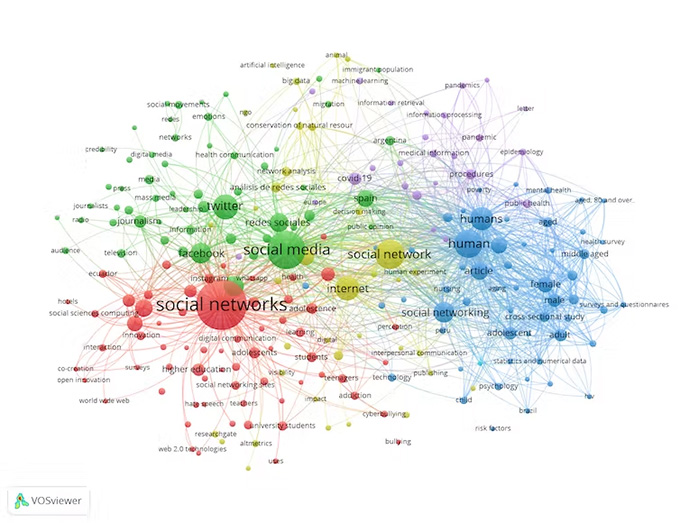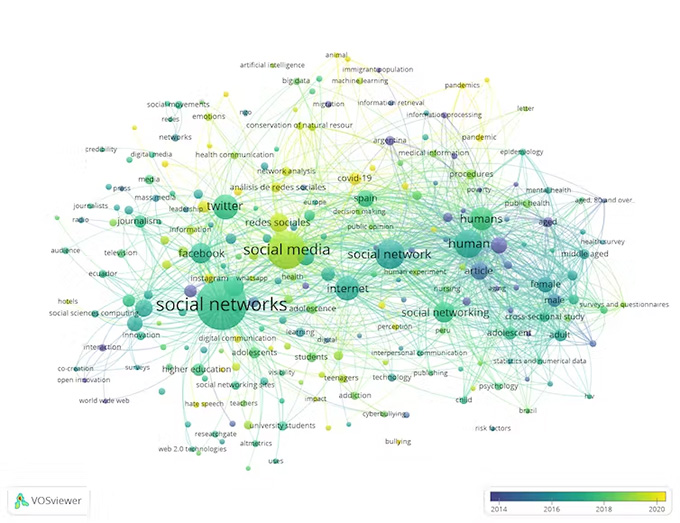
One of the world’s first social networks was created in 1997 and was called SixDegrees . His name referred to the hypothesis formulated by sociologist Standley Milgram in 1967 and later verified by Professor Duncan Watts in 2001, which holds that every person on this planet is connected to another by a distance of no more than six known people. .
Social networks can be defined today as any Internet service that allows interaction between people. A possible classification would be:
- Horizontal social networks: those that have been created for the general public, not a specific type of user. The objective is the creation of communities and personal or professional use. For example: Twitter , Facebook , Instagram , TickTok …
- Vertical social networks: to connect with an audience that shares common interests. For example: those networks of specific themes, such as the Reddit social network , or other exclusive ones for professional and entrepreneurial women such as Womenalia , or networks for the scientific community, such as ResearchGate , Publons , Academia.edu , Divulgared , or even networks intended for to education, such as: Reading library for children, RedAlumno , Dictalia , Twiducate , Moodle , among others.
- Professional social networks: the best known and used is LinkedIn .
- Content sharing networks: those whose objective is to share content of their authorship, such as YouTube .
- Blogs and microblogs: where written content is shared and often used in the business world: for example, Blogger and WordPress , or Twitter and Tumblr .
Are its effects that bad?
Like almost everything, social networks are not good or bad in themselves, but rather a good or bad use can be made of them. On the one hand, the uncontrolled and excessive use of them presents a series of risks, especially for the stages of childhood and adolescence.
Some of these risks are misinformation , the increase in possible situations of bullying or cyberbullying), the reduction in the practice of real social skills and their replacement by cybernetic interaction , or the need for approval and acceptance through the number of likes or followers and its impact on self-esteem, among others. Some even consider the social network Twitter as a mirror of our hatred .
However, there is also a positive side to the impact that social networks have today, especially from an educational and research perspective.
Social networks and education
One of the impacts that networks have on our society is that they allow us to interact, both in the most particular or personal sphere and in that of institutions, as well as sharing knowledge and forming communities.
More and more expert professionals are investing part of their time in disseminating their knowledge. A clear example is Lucía Galán Bertrand, better known as Luciamipediatra , a pediatrician aware of disclosure and present on social networks. She has over 735,000 followers and helps parents, teens, and even educators with all things pediatrics.
Bearing in mind that the educational obligation is to train people for the future, the presence and importance of networks cannot be ignored, neither in educational institutions nor among educators themselves.
Aware of this need, numerous universities have analyzed the use of social networks and other digital platforms such as blogs, wikis , YouTube, in education and their positive consequences :
- Information exchange.
- Content creation and the possibility of its modification.
- Agility, immediate and permanent access to educational content.
- Spatial and temporal flexibility.
Social networks in research
If we carry out a quick bibliometric analysis , using the Scopus database and the search term “social networks”, it reports a result of 1,276 documents in which various researchers from around the world have used the words “social networks”. sociales” in the title, abstract or keywords of their works. (The term in English, social network , yields 359,144 documents).
Thanks to the analysis of the words in the abstract and the keywords used by the author in these scientific documents, we made the following keyword co-occurrence map based on bibliometric data:

Figure 1. RRSS keyword co-occurrence map. Own elaboration through VOSviewer.
Social behavior and education
The result provides us with information, in a quick way, not only on the volume of the investigation but also on what has been investigated and published, as well as the methodology used in relation to social networks.
The graph allows us to observe different groups (in English called ” clusters” ) in different colors. And each group has specific characteristics:
It allows us to observe the existence of research on social networks ( green cluster ) closely related to journalism, the media, social networks (among which Twitter and Facebook stand out from the rest), credibility in the media, misinformation or false news ; but also with social movements, the immigrant population, electoral campaigns…
We also visualize in the purple cluster the lines of research that have taken advantage of the information provided by social networks: Medicine being one of the great fields of study: covid-19, epidemics, pandemics, mental health, public health , medical information, procedures, misinformation, urology, pediatrics… The methodology used for these studies are machine learning, quantitative analysis, reviews and sentiment analysis.
Populations and social behavior
Research related to certain countries also appears, such as Brazil, Colombia, Mexico, Peru, with a methodology focused on cross-sectional studies or surveys. In addition, qualitative research related to family, health, knowledge and age are grouped in the blue cluster .
The red cluster is research on social behavior: addictions, adolescence, bullying, cyberbullying, privacy, freedom of expression, hate, acceptability of technology, social movements, immigrant population, citizen participation, etc. Another of the most researched topics is the relationship between social networks and education: secondary education, higher education, university students, learning, collaborative learning, training of trainers and innovation, among others.
The yellow cluster provides us with information on research related to innovation, marketing , tourism, business, electronic commerce or entrepreneurship, among others; as well as the methodology used: surveys, questionnaires, web 2.0 technology, statistics, big data , bibliometrics, artificial intelligence, automatic learning ( machine learning ), sentiment analysis, quantitative analysis, analysis of social networks…
Change in interests
We analyze the time horizon in the following figure:

Figure 2. Map of co-occurrence analysis of the RRSS by year. Own elaboration through VOSviewer.
We observe how there has also been a change in research on social networks: between 2014 and 2018, more focused on social analysis, analysis of human behavior in adolescence, interpersonal communication; From 2018 to 2020, with investigations more geared towards journalism, credibility, social networks such as Twitter and Facebook, freedom of expression, fake news, electoral campaigns, political information, conservation of natural resources, pandemic, covid -19.
Invest or waste time
Not only is it possible to use social networks to “lose time”, but we can “invest” part of our time in personal use, thanks, among other actions, to disclosure.
Let’s bet on mitigating the negative effects of a current that is already part of our lives and encourage its positive part.
Author Bios: Console Quintana Red is a PhD in Economics and Business. Professor and researcher in the area of Applied Economics at the Faculty of Law and Social Sciences of Ciudad Real at the University of Castilla-La Mancha
